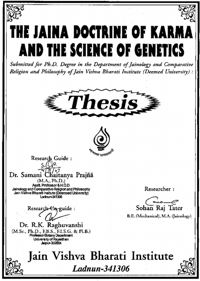(a) Atonement (Prāyaścita)
In Prāyaścita one asks for forgiveness for the various errors of commission and omission, the faults and sins committed knowingly or unknowingly. This austerity may be performed in the presence of a monk or nun or can be done alone. Prāyaścita helps us to reflect upon ourselves in a way that leads to self-correction. Even for a small fault we begin to say Micchāmi dukkadaṁ.
(b) Humility (Vinaya)
One must cultivate humbleness towards everyone. This austerity leads to tolerance and sympathy towards others and helps us to overcome ego and anger.
(i) Jñāna Vinaya—One should be humble and respectful to those who are superior in knowledge and wisdom.
(ii) Darśana Vinaya—One should be humble and respectful to those who have acquired the true insight of religious principles.
(iii) Cāritra Vinaya—One should be humble and respectful to those who have good morals and follow religious principles.
(iv) Māna Vinaya—One should pay respect and be humble to all saints who help others in their spiritual upliftment.
(c) Serving others (Vaiyāvacca)
Vaiyāvacca means serving religious teachers, ascetics, virtuous people, monks, colleagues, and companions devotion. One should especially render services to the sick and weak. Though this austerity seems to be external activity it makes a person humble and serves the purpose of overcoming ego and hatred.
(d) Giving away (Vyutsarga)
In Vyutsarga, not only one gives away sinful physical activities but also gives away sixteen different inner passions.
(e) Spiritual study (Svādhyāya)
Svādhyāya means to study scriptures or can also mean to understand the self. Through study we try to answer the questions: Who am I? Who should I be? Through Svādhyāya we realize that a soul is pure thing. This will lead us to contemplate on the question: What am I doing in this body? Thus, study will lead us to be a pure soul. This study is divided into five levels:
(i) When one starts reading the scriptures it is called Vacana.
(ii) While reading some doubts may arise and trying to resolve them is called Prachanā.
(iii) After understanding what is right and contemplating on it is called Anuprekṣā.
(iv) After realizing what is right, one should contemplate on it again and again so one can stay in focus. This repeatition is called Amnāya.
(v) After learning what self is one should teach others the same. This is known as Dharmopadeśa.
All five of above are external svādhyāya, but these will lead us to internal svādhyāya about the self. Thus one will acquire right perception and right knowledge, which will lead to right conduct and will open up the path of ultimate liberation.
(f) Meditation (Dhyāna)
Dhyāna means concentration of thoughts. This concentration could arise from intense passions like attachment, lust or animosity or from the search for the truth and from the absolute detachment towards worldly affairs.
Dhyāna is divided in four categories:
(i) Ārtadhyāna
(ii) Raudradhyāna
(iii) Dharmadhyāna
(iv) Śukladhyāna.(i) In Ārtadhyan a person reflects on the:
(a) loss of dear ones (Iṣta viyoga).
(b) development of a new relationship with an undesirable.
(c) Physical illness (Roga cintā)
(d) Future planning (Agrasoca or Nidānartha)(ii) In Roudradhyāna one is absorbed in taking revenge for the damage or loss caused by others. There are four types:
(i) Hiñsānubandhi
(ii) Mṛṣānubandhi
(iii) Steyānubandhi
(iv) Saṁrakṣānubandhi.Both Arta and Roudradhyāna lead to accumulation of bad karmas and therefore Arta and Roudradhyāna should be avoided.
Dharmadhyāna means reflecting on the ways and means towards realization of self.
Śukladhyāna means reflecting on the purity of the soul. Dharmadhyāna and Śukladhyāna lead to removal of karmas. Therefore for the purpose of nirjarā we shall contemplate on dharmadhyāna and śukladhyāna. If contemplation on dharmadhyāna is at the highest level then by achieving śukladhyan one can completely destroy mohnīya karma, Jñānāvarnīya, Darśnāvarnīya and Antrāya karmas and one can become kevalī.
 Prof. Dr. Sohan Raj Tater
Prof. Dr. Sohan Raj Tater
 Doctoral Thesis, JVBU
Doctoral Thesis, JVBU